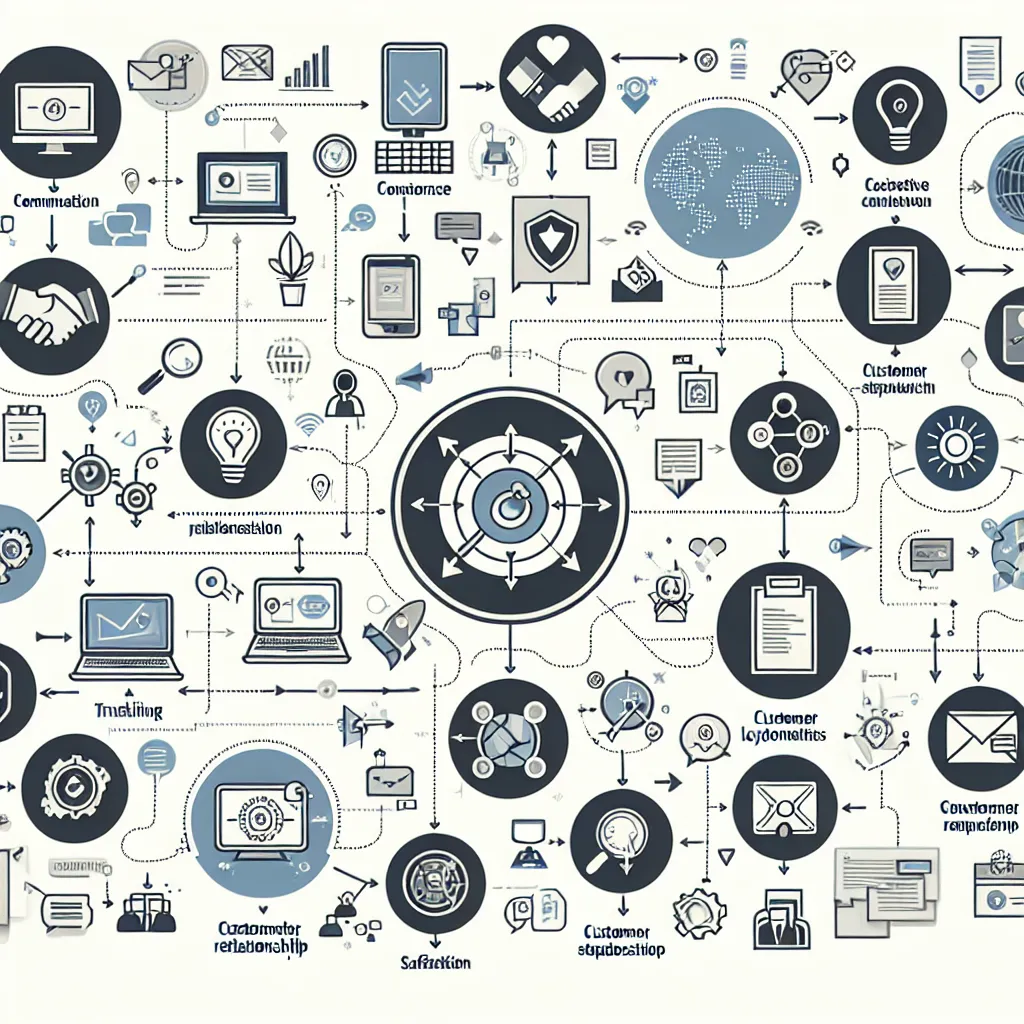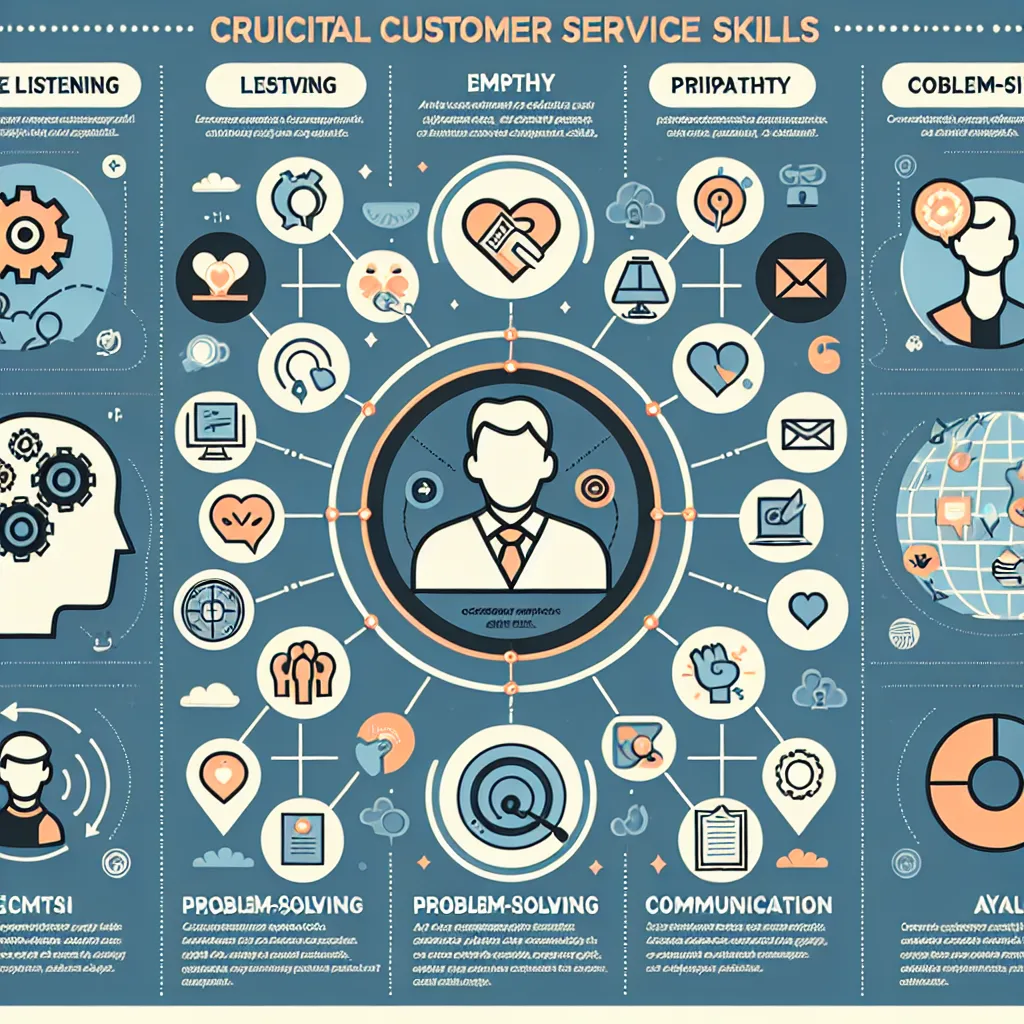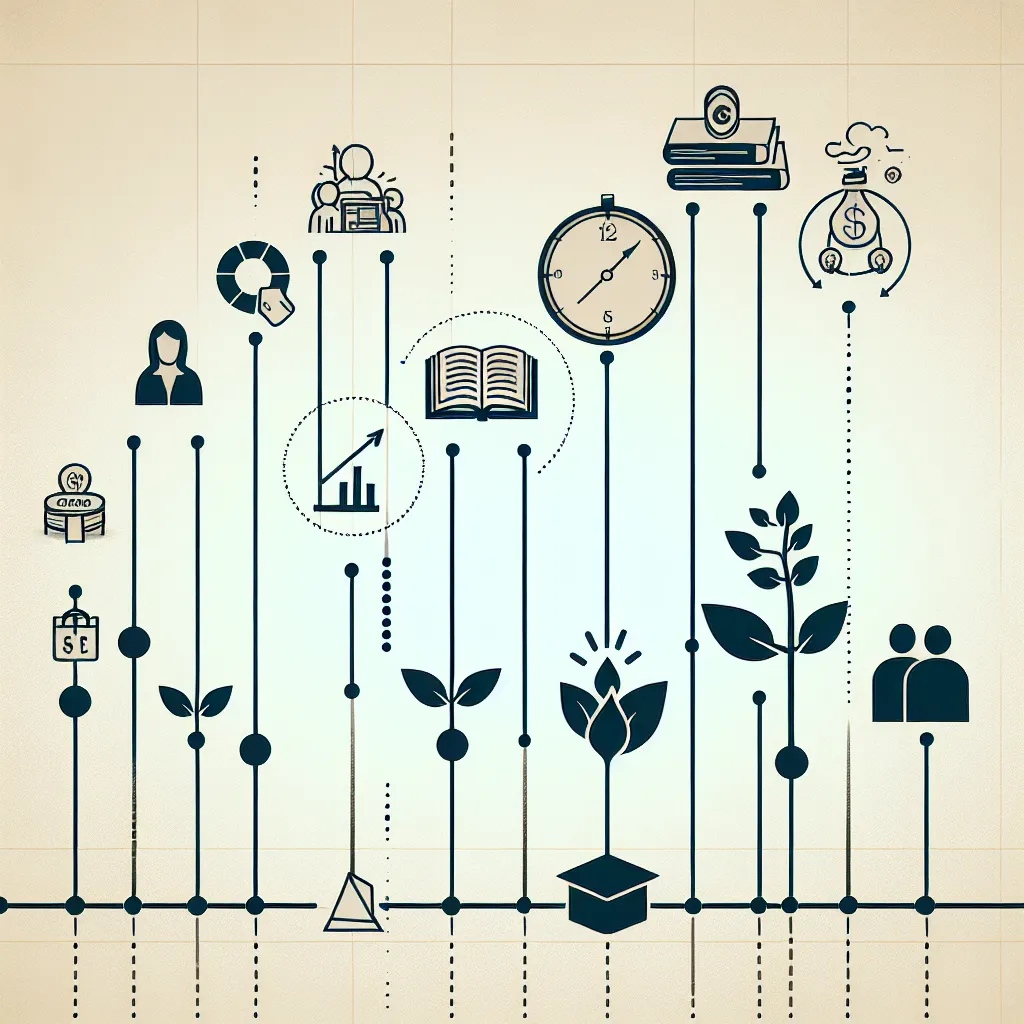Customer relationships are a crucial aspect of many businesses, and questions about them are common in job interviews. Whether you’re applying for a customer service role, sales position, or any job that involves client interaction, being prepared to discuss customer relationships is essential. This article will guide you through effective strategies to answer questions about customer relationships in English, helping you impress your interviewer and showcase your skills.
Understanding the Importance of Customer Relationships
Before diving into specific questions and answers, it’s vital to grasp why customer relationships are so significant in the business world. Customer relationships refer to the interactions and connections between a company and its customers. Strong customer relationships lead to customer loyalty, positive word-of-mouth marketing, and increased revenue. Employers want to ensure that potential hires understand this importance and can contribute to building and maintaining these relationships.
 Customer Relationships Diagram
Customer Relationships Diagram
Common Questions About Customer Relationships and How to Answer Them
1. “How do you build strong relationships with customers?”
When answering this question, focus on key aspects of customer relationship building:
- Active listening: “I believe active listening is crucial. By paying close attention to customers’ needs and concerns, I can better understand and address their issues.”
- Empathy: “Showing empathy helps create a connection. I always try to put myself in the customer’s shoes to understand their perspective.”
- Consistent communication: “Regular, clear communication is vital. I make sure to keep customers informed at every stage of our interaction.”
- Going above and beyond: “I aim to exceed expectations whenever possible, which often means going the extra mile to solve problems or provide additional assistance.”
Example answer:
“To build strong relationships with customers, I focus on active listening to truly understand their needs. I practice empathy to connect with them on a personal level. Consistent communication is key, so I always keep customers informed. Lastly, I strive to exceed expectations by going above and beyond in my service. For instance, in my previous role, I implemented a follow-up system to check on customer satisfaction after each interaction, which significantly improved our customer retention rate.”
2. “How do you handle difficult customers?”
This question assesses your ability to manage challenging situations:
- Stay calm and professional: “I always maintain a calm and professional demeanor, regardless of the customer’s attitude.”
- Listen and acknowledge: “I listen carefully to understand the root of their frustration and acknowledge their feelings.”
- Find solutions: “I focus on finding solutions rather than dwelling on the problem.”
- Escalate if necessary: “If I can’t resolve the issue myself, I know when to escalate to a supervisor while ensuring the customer feels heard and respected.”
Example answer:
“When dealing with difficult customers, my first step is to remain calm and professional. I actively listen to understand their concerns fully and acknowledge their feelings. Then, I focus on finding a solution that addresses their needs. For example, I once had a customer who was frustrated about a delayed shipment. By listening empathetically, offering a sincere apology, and providing regular updates on the shipment’s status, I was able to turn the situation around. The customer ended up thanking me for my patience and thorough assistance.”
3. “Can you describe a time when you went above and beyond for a customer?”
This question allows you to showcase your commitment to customer satisfaction:
- Choose a relevant example: Select a situation that clearly demonstrates exceptional service.
- Explain the context: Briefly describe the customer’s problem or request.
- Detail your actions: Explain what you did that was ‘above and beyond’.
- Share the outcome: Describe the positive result of your efforts.
Example answer:
“In my previous role at a software company, we had a client who was struggling to integrate our product with their existing systems. Although it was outside my regular responsibilities, I noticed their frustration during a support call. I took the initiative to arrange a meeting with our development team to discuss a custom solution. I then worked overtime to create a detailed implementation guide specifically for this client. As a result, not only did we solve their immediate problem, but the client also upgraded to our premium service and became a valuable reference for future sales.”
4. “How do you measure customer satisfaction?”
This question assesses your understanding of customer service metrics:
- Mention common metrics: “I’m familiar with key metrics like Net Promoter Score (NPS), Customer Satisfaction (CSAT) scores, and Customer Effort Score (CES).”
- Explain the importance of feedback: “I believe in the importance of both quantitative metrics and qualitative feedback from customers.”
- Discuss continuous improvement: “Regular analysis of these metrics helps identify areas for improvement in customer service.”
Example answer:
“To measure customer satisfaction, I rely on a combination of quantitative metrics and qualitative feedback. I’m experienced in using tools that track Net Promoter Score (NPS), which indicates how likely customers are to recommend our service, and Customer Satisfaction (CSAT) scores, which provide immediate feedback after interactions. Additionally, I value qualitative feedback through customer surveys and direct conversations. In my previous role, I implemented a system to regularly analyze these metrics, which helped us identify and address pain points in our customer journey, leading to a 20% increase in our overall satisfaction scores over six months.”
5. “How do you prioritize customer needs when dealing with multiple customers?”
This question evaluates your ability to manage time and resources effectively:
- Mention assessment criteria: “I assess urgency, impact, and complexity of each customer’s needs.”
- Discuss communication: “I believe in setting clear expectations and keeping all customers informed about timelines.”
- Highlight efficiency: “I look for opportunities to address similar issues simultaneously when possible.”
- Emphasize fairness: “I ensure that all customers receive attention, even if some issues take longer to resolve.”
Example answer:
“When dealing with multiple customers, I first assess each situation based on urgency, potential impact on the customer’s business, and complexity of the issue. I then prioritize accordingly, always ensuring to communicate clearly with all customers about expected response times. For instance, if I have a critical system outage for one customer and a minor query from another, I’ll address the outage first but make sure to acknowledge the query and provide an estimated response time. I also look for efficiencies, such as addressing similar issues from multiple customers simultaneously when possible. This approach has helped me maintain a 98% customer satisfaction rate even during peak periods.”
Tips for Answering Questions Outside Your Knowledge Scope
Sometimes, you might encounter questions about customer relationships that you’re not fully prepared for. Here are some tips to handle such situations:
-
Be honest: If you’re not familiar with a specific concept or tool, it’s okay to say so. Honesty is appreciated in customer relationships and interviews alike.
-
Show willingness to learn: Express your enthusiasm to learn about new aspects of customer relationship management.
-
Draw parallels: If you’re not familiar with a specific tool or method, try to relate it to something similar you have experience with.
-
Ask for clarification: If you’re unsure about the question, it’s perfectly acceptable to ask for more details or context.
-
Provide a relevant example: Even if you can’t answer the specific question, you might be able to provide an example of how you’ve handled similar situations in the past.
Example response:
“I haven’t had direct experience with that particular customer relationship management tool. However, I’m very familiar with [similar tool] and have always been quick to adapt to new systems. Could you tell me a bit more about how your company uses this tool? I’d be very interested in learning about it and how it could enhance customer relationships.”
Common Mistakes to Avoid When Discussing Customer Relationships
When answering questions about customer relationships, be careful to avoid these common pitfalls:
-
Focusing solely on sales: While sales are important, customer relationships are about more than just closing deals. Emphasize long-term relationship building.
-
Neglecting empathy: Avoid sounding mechanical or process-driven. Show that you understand the importance of emotional intelligence in customer interactions.
-
Overpromising: Be realistic about what you can deliver. Overpromising can lead to disappointed customers and damaged relationships.
-
Ignoring difficult customers: Don’t suggest avoiding or dismissing challenging customers. Show that you can handle difficult situations professionally.
-
Failing to mention metrics: While soft skills are crucial, don’t forget to mention how you measure and improve customer satisfaction concretely.
To avoid these mistakes, always frame your answers in terms of building long-term, mutually beneficial relationships. Show that you understand the balance between meeting customer needs and achieving business objectives.
 Customer Service Skills
Customer Service Skills
Follow-up Questions and Suggested Answers
Here are some additional questions you might encounter, along with suggested answers:
-
Q: “How do you handle customer feedback, both positive and negative?”
A: “I value all customer feedback as opportunities for improvement. For positive feedback, I share it with the team to boost morale and reinforce good practices. For negative feedback, I address it promptly, thank the customer for their input, and use it to identify areas for improvement in our processes or products.” -
Q: “Can you describe your approach to customer retention?”
A: “My approach to customer retention focuses on consistent engagement, proactive problem-solving, and delivering value. I believe in regular check-ins with customers, anticipating their needs, and always looking for ways to add value to their experience with our product or service.” -
Q: “How do you stay updated on customer trends and preferences?”
A: “I stay informed through a combination of methods. I regularly read industry publications, attend webinars and conferences, and analyze our customer data for trends. I also believe in the importance of direct customer feedback, so I often engage in conversations with customers to understand their evolving needs and preferences.” -
Q: “How would you handle a situation where a customer’s request goes against company policy?”
A: “In such situations, I first ensure I fully understand the customer’s needs and the reasons behind our policy. I then try to find a solution that satisfies the customer while adhering to company guidelines. If no such solution exists, I explain the policy clearly and empathetically to the customer, offering alternative solutions where possible.” -
Q: “What strategies do you use to upsell or cross-sell to existing customers?”
A: “My strategy for upselling or cross-selling is based on understanding the customer’s needs and how our products can add value to their business. I focus on educating customers about new features or products that align with their goals, rather than pushing for sales. I also use data from their current usage to make personalized recommendations.” -
Q: “How do you maintain customer relationships in a digital or remote environment?”
A: “In a digital environment, I focus on clear, frequent communication through various channels like email, video calls, and collaborative tools. I make sure to personalize interactions as much as possible, use visual aids when explaining complex information, and always follow up promptly. I also try to create a sense of connection by being responsive and showing genuine interest in the customer’s success.” -
Q: “Can you give an example of how you’ve turned a dissatisfied customer into a loyal one?”
A: “In my previous role, we had a customer who was considering canceling their subscription due to some technical issues. I took ownership of their case, scheduled daily check-ins, and worked closely with our tech team to resolve the issues. I also provided them with additional training on our product. By showing dedication to their success, we not only retained the customer but they also upgraded their plan and became one of our biggest advocates.”
Conclusion
Answering questions about customer relationships effectively requires a combination of empathy, problem-solving skills, and a deep understanding of the importance of customer satisfaction. By preparing thoughtful responses to common questions and focusing on real-life examples that showcase your skills, you can demonstrate your value to potential employers.
Remember to always emphasize the importance of building long-term relationships, show your ability to handle challenging situations, and highlight your commitment to continuous improvement in customer service. With these strategies, you’ll be well-equipped to impress in your next interview and land that customer-focused role you’re aiming for.
For more tips on acing your job interview, check out our articles on how to prepare for a customer service interview and how to answer questions about your work experience.




